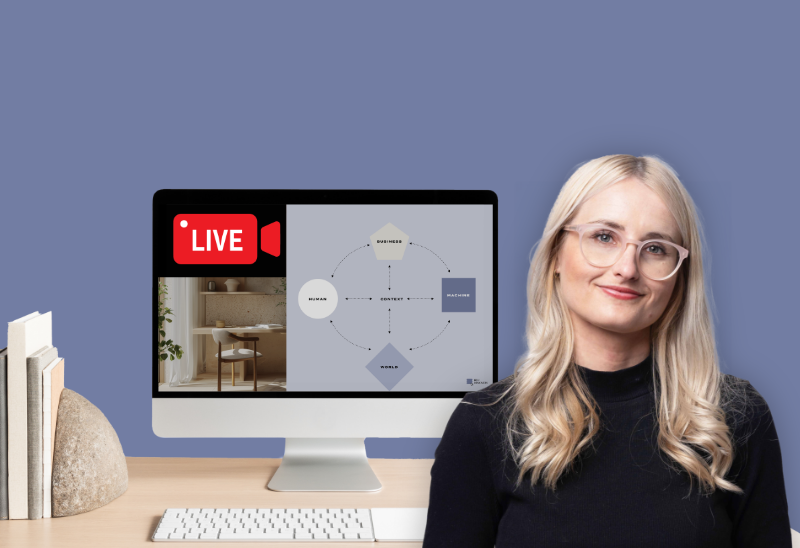A brief inspection of our responsibility as designers
I was meeting a friend for coffee and surprisingly started talking about a topic we never really talked or thought of before or even looked up anything on the internet. We talked about tiny pizza ovens for your home. We discussed where to put it and even what kind of cool parties we could throw with this oven. Baking pizzas all night long. Basically a crazy party.
Guess what — on my way back home I scrolled through Instagram and many amazing offers for tiny pizza ovens appeared.
I think we all have experienced something similar before.
In this short article, I don’t want to talk about the fact that we are designing products and digital services that steal people’s time and changes the whole fabric of our society. Or that we know how to trick the user to do specific things like clicking on this CTA for a higher conversation rate.
This is going to be another story.
I would like to share my thoughts about responsibility and trust when it comes to emerging technologies and artificial intelligence.
Responsibility of Design
When I started my design career as a graphic designer, before I switched to UX, I mostly designed corporate designs with typography and objects.
Now and especially in the UX and digital design area, the influence of design is expanding beyond typography and objects into the areas of healthcare, public policy, education, financial services, etc. This makes us responsible for the quality of people’s lives. Have you ever wondered who benefits from the results of your design work?
So, why should a user stay longer on a site or convert his/her account into a paid account? Are there any other reasons other than yours or your client’s financial goals? What makes the product you’ve designed better than the others? What makes it even relevant to anyone besides you?
Considering an ethical dilemma in today’s society. A doctor is treating a dying patient with a chronic condition and all pharmaceutical treatments are failing, but a medical device has just come up that is expected to help the patient. This device has not been screened through human testing, nor has it been approved for market. The person would probably use it anyway, why not try the device? What would you do in this situation, is this ethically or morally right to do?
A doctor has a contract and rules, a guideline to decide in these situations. Various professional groups, including doctors, take an oath. Which doesn’t makes it easier in the first place but helps you to decide. We designers don’t have any moral and ethical guidelines we can rely on. Besides the ones we got from society. So how do we decide?
1964 Ken Garland published the first design manifesto “The First Things First Manifesto”. Supported by more than 400 graphic artists and artists, it also received the support of Tony Benn, a radical left-wing MP and activist who published it fully in The Guardian.In 1964, 22 visual communicators signed.
The First Things First Manifesto a call for our skills to be put to worthwhile use. With the explosive growth of global commercial culture, their message has only grown more urgent. This manifesto was renewed 2000 in expectation that no more decades will pass before it is taken to heart. Now would probably be a good time to renew the manifesto.Many things have changed since 2000.
Data & Privacy issues
It gets even trickier in case of data and privacy issues. We shouldn’t forget about the real and reasonable fear that companies will take ethical liberties in the name of pushing hard toward a good solution, like saving lives or curing a disease. The co-founder of Google’s artificial intelligence lab, DeepMind, was had to leave some weeks ago because he did some controversial decisions which involved the illegal use of over 1.5 million hospital patient records in 2017.
Designers are not given any guidance for ethical decision-making even as they continue to expand their influence into newer and riskier fields with long-standing moral implications.
We know that designers have a huge role to play in promoting ethical design in data collection, human-computer interfaces, and how algorithm-driven artificial intelligence shapes our experiences. This is where you have to be able to prioritize and negotiate what’s possible with the underlying user need in mind.
Emerging technologies
Responsibility and trust get even more important when it comes to emerging technologies like artificial intelligence, machine learning or voice control.
To come up with ethical guidelines and rules, designers need to get an understanding of the influence of immersing technologies.
Creating an AI can be five times worse for the planet than a car. Training artificial intelligence is an energy-intensive process. New estimates suggest that the carbon footprint of training a single AI is as much as 284 tonnes of carbon dioxide equivalent — five times the lifetime emissions of an average car.
People deserve to live in a safe and clean environment so it’s your job to make sure that the products you design do not harm it.
Most people do not have enough time, resources or self-awareness to look at themselves in a bigger picture. But we have it all. They kind of rely on us.
While working on UX we often discuss psychological aspects of peoples’ behaviors, after all, we design the experience so something uncountable and widely undefined. And psychology has thoroughly examined all the ways people think and do stuff and formed tons of laws, rules, and thesis describing that. It’s a field form which you can pick valuable insights and put them into your work.
Thinking about a conclusion
Trust and responsibility is the topic of this annual World Interaction Design Day where designers come together as a united global community to show how interaction design improves the human condition. Starting conversations, understanding the current situations and looking for ways to integrate more ethical guidelines in our design process.
We as designers can consult companies about digital products. So let us think about not human-centered-design but humanity-centered design. General ethics for design cannot be created by a single entity. Ethics are dynamic, a living breathing thing, unique to every team or design project. Underlining the responsibility of designers to help build trust into a system in which technology works behind the scenes to quantify everything around us.
We are aware of the importance of this topic. Sustainability, climate change, and nature are important topics for our generation- seeing 270.000 people on the street of Berlin demonstrating during the fridayforfuture and many more all around the world.
Starting with education
Understanding what kind of data is collected and how it is going to be used within the product.
Understanding what impact using specific technologies might have.
Understanding the alternatives which we can propose to our clients as better ways to reach specific goals.
We know that in the future the role of us as designers is probably going to switch from actual designing stuff to more consultation. So, why not start right now.
How can we educate yourselves and stay informed about the latest technologies? Reading along with ongoing curiosity is also a great way to stay informed. I like articles from Marli Mesibov in Smashing Magazine talking about designing experiences to improve mental health, or Ella Espinoza’s Betakit talking about how to design healthcare to be more human.
Generally finding good resources in The Verge and Wired. But it’s also important to get inspiration outside of technology and design, by going to museums or studying philosophy.
Maybe not new.
But a friendly reminder to do it.
For the future, we want to live in.



